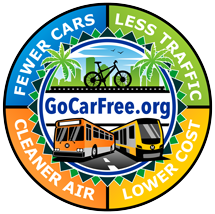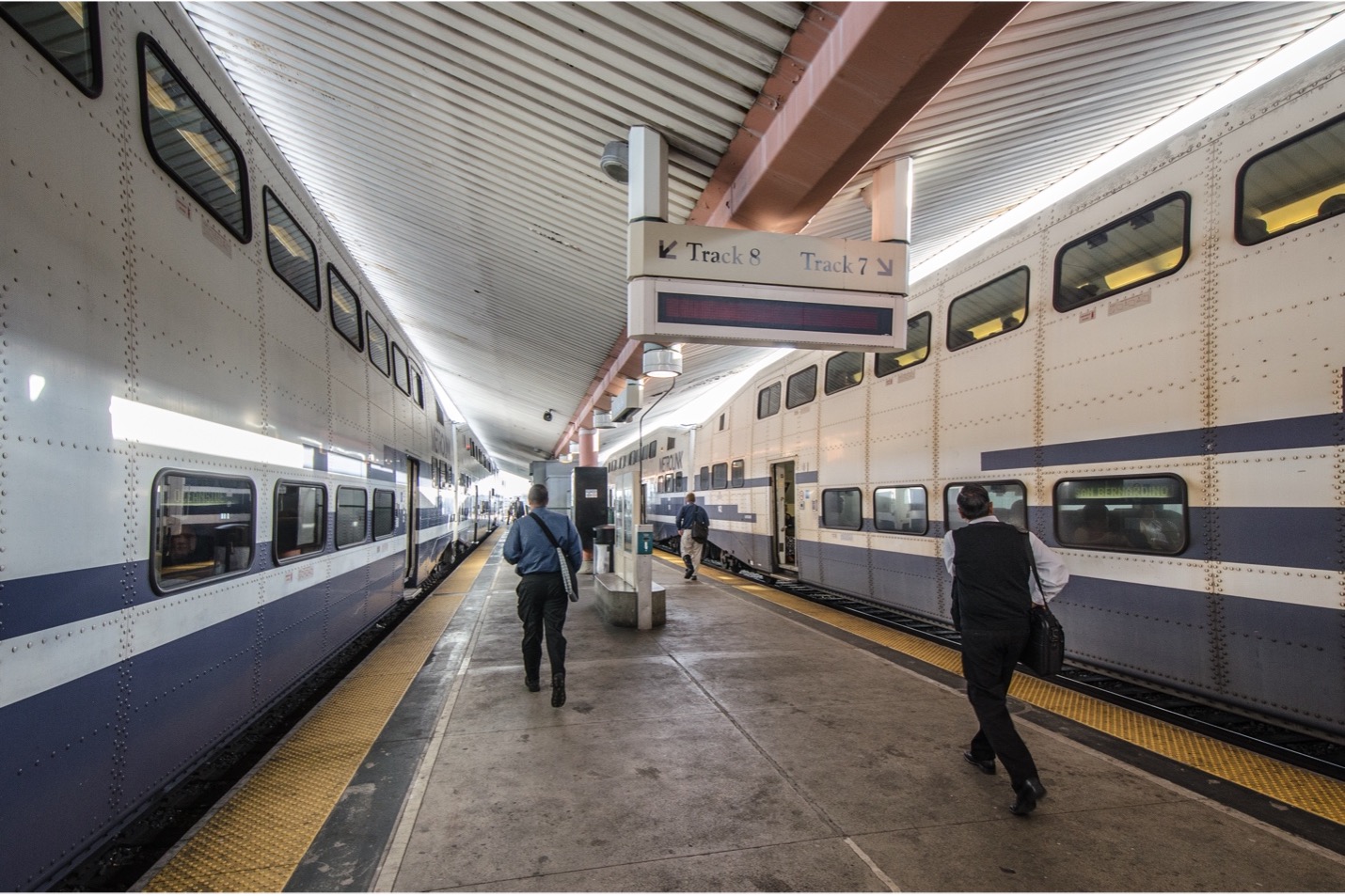
Lesson 16
Give It a Try: The Weekend Trial Run
“When I have fully decided that a result is worth getting, I go ahead of it and make trial after trial until it comes.”
– Thomas A. Edison

After reading lessons 8 through 15, you’ve probably identified one mode of commuting as the quickest and most convenient for your particular situation. But the fastest way isn’t always the best way. Here are nine criteria to keep in mind as you evaluate transportation options:
- Safety
- Reliability
- Convenience
- Daily, monthly, and annual costs
- Accessibility of pick-up and drop-off locations
- Shelter from inclement weather
- Proximity to stores, shops, and restaurants
- Cleanliness
- Availability of emergency assistance
Remember that safety is always the most important criteria. A fast commute may save time, but a safe commute saves lives.
The Weekend Trial Run
Now it’s time to give your new commute a try. But rather than risk it on a workday, try it on a weekend. This way if you accidentally take the wrong train, miss your bus stop, or get a flat tire you won’t be late for work.
Keep in mind that most mass transit providers operate slightly different schedules on weekends and holidays. So built that into your planning.
Before you go, tell your family or friends what you’re doing. Keep their cell phone numbers handy in case you need assistance. And always have a backup plan – like calling an Uber or Lyft.
If you’re planning to bicycle commute, see if you can get a friend to ride with you on your weekend trial run. It will be more fun, and your friend may notice things that you don’t. Plus, you’ll feel safer exploring a route through unfamiliar neighborhoods when you’re not alone.
Finally, try to make the trial run as close to the real thing as possible. If you plan to ride to work carrying your laptop and lunch in a backpack, do the same thing on your trial run. If you’ll be commuting at 7:30 in the morning, make your trial run at the same time of day. If you think you’ll take one route on the way to the office and a different one on the way home, mimic that pattern.
Evaluating the Trial Run
After you’ve made it to work and back once, your confidence will soar – even though you did it on a Saturday morning instead of during rush hour. If things didn’t go exactly smoothly during your trial run, you will still feel a sense of accomplishment. And you will have learned from your mistakes.
Here are a few questions to ask yourself after completing your weekend trial run:
- How long did it take from doorstep to doorstep?
- Did you pick the safest route?
- Did you get sweaty?
- How much money did you spend?
- If you had an emergency, would you be able to get help?
- Would foul weather pose a problem?
- Are there services along your route that you could use, like a dry cleaner, grocery store, bank, coffee shop, or post office?
Of course, the big question is… can you see yourself commuting this way every day? Remember, it will feel different from commuting in a car. It may feel slower.
Car owners often jump to the conclusion that all other modes of local travel are inefficient by comparison. But remember, when you commute car free you save time in other areas.
Car Free Success Story:
I attended a bicycle commuting seminar at an REI store. Then I drove my prospective route. Next I road it on my bike on a Saturday with my wife driving the car behind, in case I needed assistance. After that, I started riding in and having my wife take me home with the bike on the rack. Eventually I got to riding both directions. I recommend this to anyone who is willing to make a change for the good of themselves and others. It isn’t something that happens overnight. It takes planning and education. I especially suggest it for people who live within five miles of work. Which according to statistics is like 50 percent of the people I work with. It really reminds you that every day is a gift . . . that you can accept the status quo (driving a car), or you can go against the stream and make a difference for you and for the entire world.

Becoming a Car free Commuter
Once you’ve made a successful weekend trial run, it’s time to put your new commuting plan into practice. “But shouldn’t I wait until I’ve made three or four successful weekend commutes?” This isn’t a space shuttle launch. It’s just getting to work and back. One successful trial run is all it should take.
The day you make your first real, weekday car free commute it’s a good idea to leave plenty early. This will allow extra time for traffic and larger crowds, which were probably absent during the weekend run.
Again, if it doesn’t go perfectly smoothly the first day, don’t despair. The more you do it, the more efficient your commute will become. Soon you’ll have complete confidence in your ability to get to work reliably and on time every day – even in bad weather.
Can I Stop Reading Now?
“Now that I can get to work without a car, I can live car free, right?” Not quite. Reliable commuting is one essential element of car free living. But managing your non-work-related transportation is also important.
In the next section we’ll show you how to run errands, grocery shop, go on dates, and how to get to every event on your social calendar – all without owning a car.
Car Free Success Story:
When my husband and I first moved to Chicago, we were paying $235 a month to park our car two blocks from our apartment. We also found that upon moving to Chicago, our car insurance rates increased by 50 percent. Finally, we realized that we simply didn’t enjoy driving here. We found the traffic frustrating, drivers pushy and too prone to honk, and the frequent non-perpendicular intersections tricky to maneuver. So the decision to get rid of the Honda wasn’t a tough one. We anticipated saving serious money – around $3,000 a year in parking fees, around $1,400 for insurance, and $2,000 or more yearly for maintenance and gas.
Generally, we find commuting and doing errands by foot, mass transit, and bicycle much less of a hassle than by car. We consider the removal of traffic and parking anxiety from our lives to be a huge bonus. We feel, quite literally, “footloose” when we remember we don’t have to worry about where we’re going to park.
However, one of the biggest drawbacks to not having a car is the ease of getting anywhere on the spur of the moment. With a car, there are no compunctions about heading to Chinatown (eight miles away) for some takeout at ten o’clock at night. The biggest challenge to not having a car is probably the need for planning. If you want to go somewhere that is too distant to reach on foot or bike, or public transit doesn’t serve frequently, it becomes necessary to consult bus and train schedules, organize rides with friends, or rent a vehicle.
In general, it takes us longer to get places by walking, biking, or using public transportation. However, that’s time well spent for us. Walking or biking, we’re getting some exercise and engaging with our surroundings. On public transit we’re typically reading.
